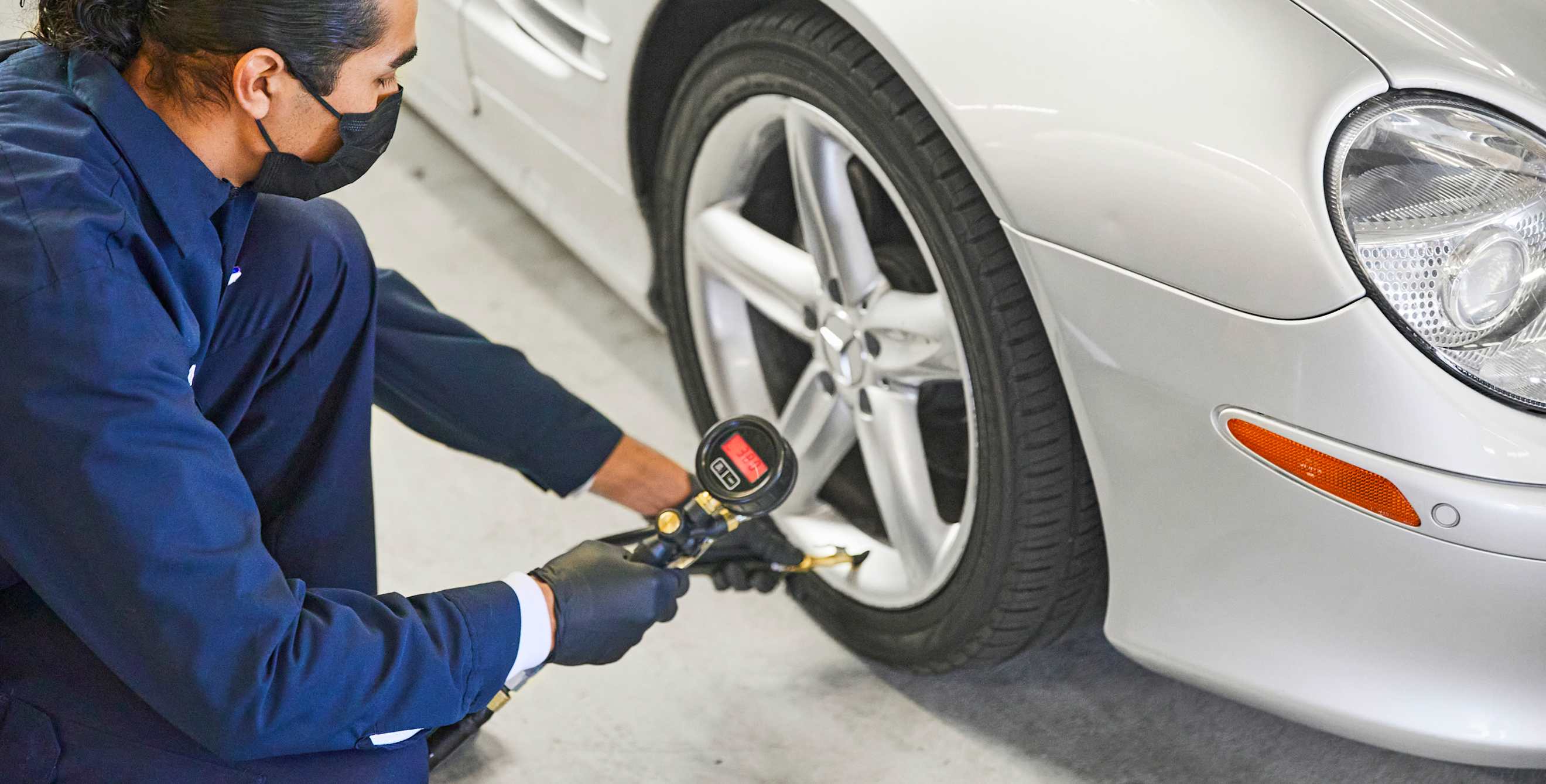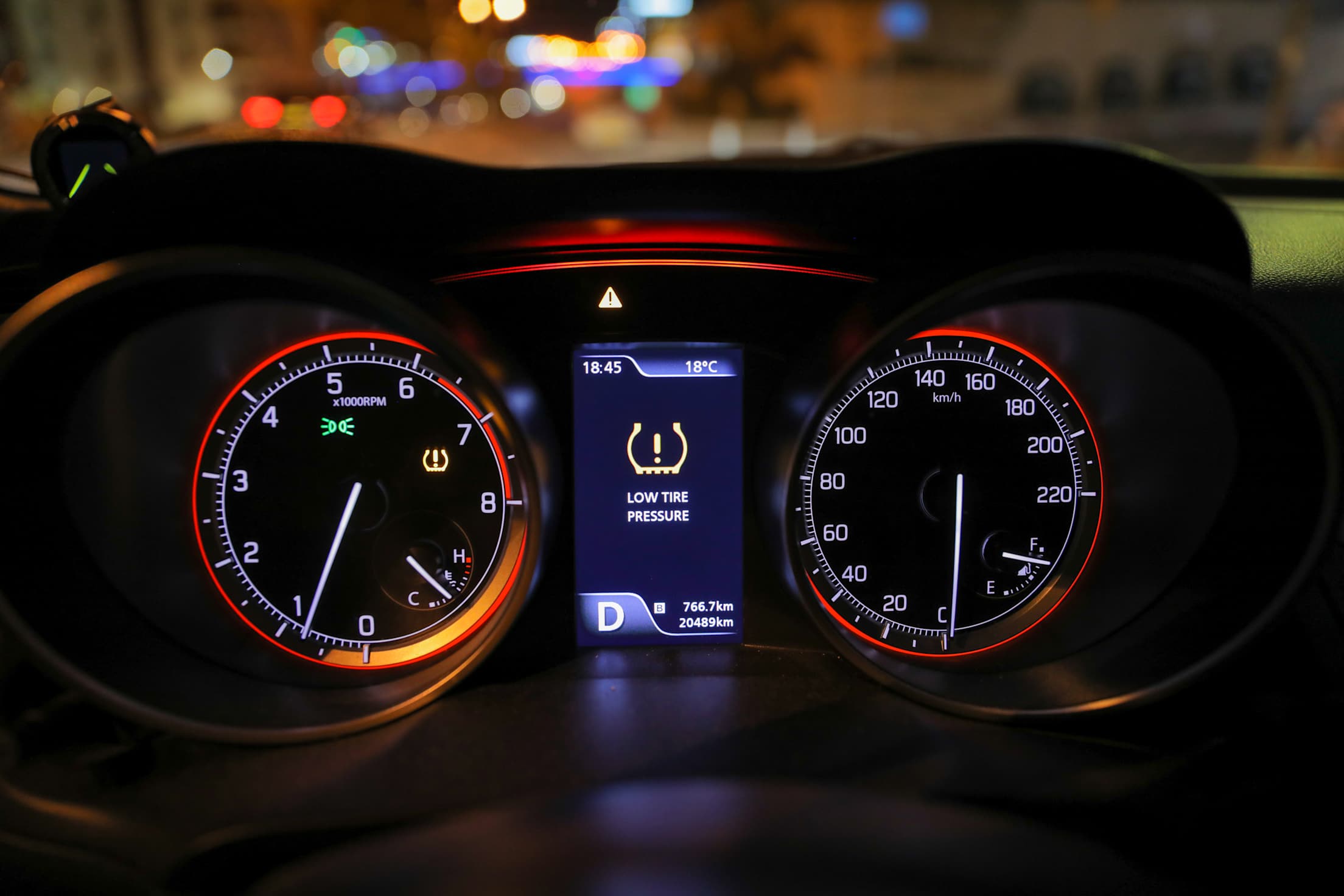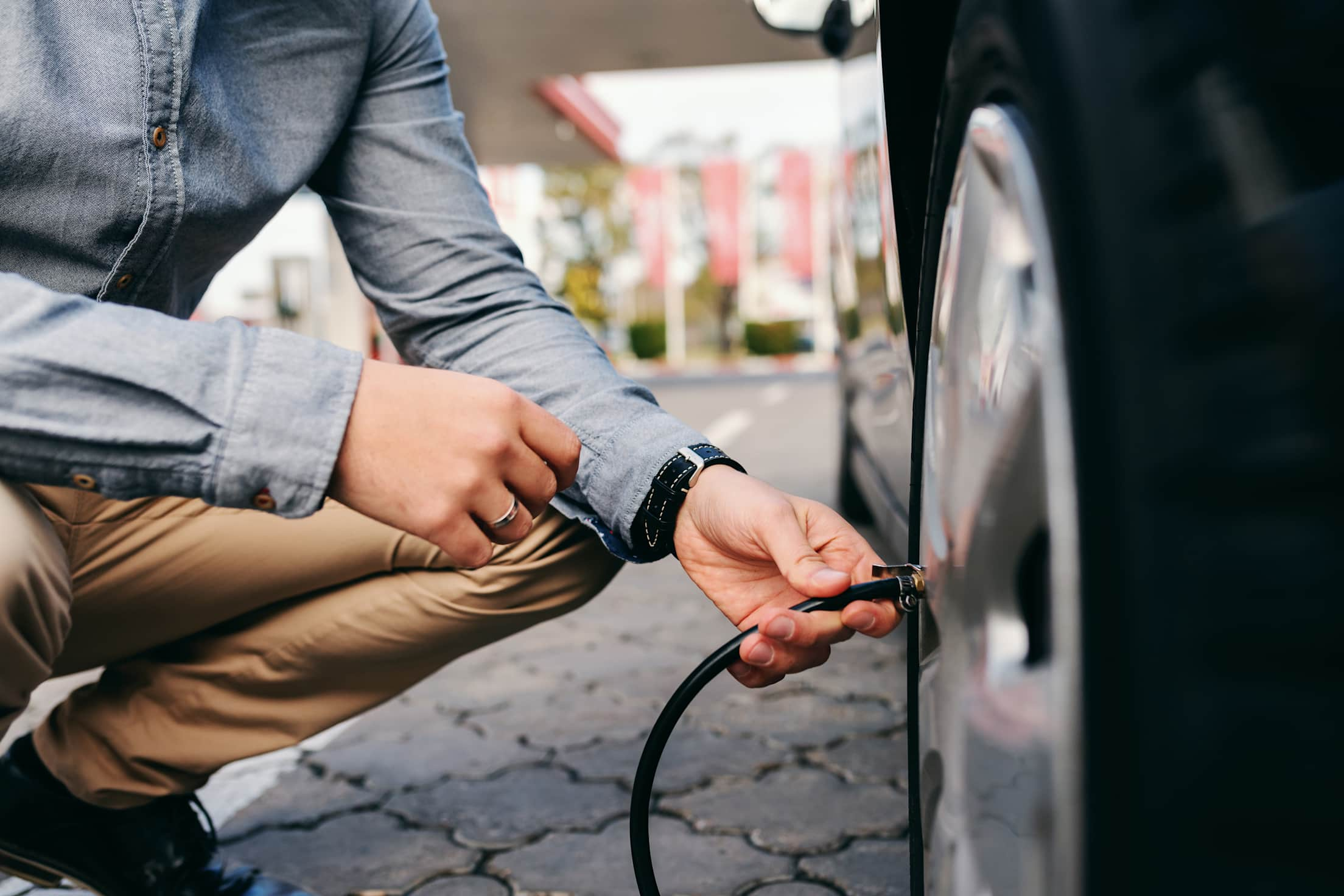
What Does My Car’s Tire Pressure Light Mean?
What to do if your TPMS light comes on.

Improperly inflated tires can lead to blowouts, flat tires, and crashes, according to the National Highway Traffic Safety Administration. Under- and over-inflating can also cause tires to wear unevenly, shortening their lifespan and costing you money. If that wasn’t enough, you’ll also pay at the pump. You can save up to 3 percent on fuel by inflating your tires to the PSI (pounds per square inch) listed on the frame of the driver’s door, according to the U.S. Department of Energy.
Since 2008, auto manufacturers have been required to install tire pressure sensors, also called a tire pressure monitoring system (TPMS), on all new vehicles in the hopes that a visual reminder would decrease the likelihood of people driving on dangerous under- or over-inflated tires. Here’s what you need to know about your vehicle’s TPMS and what to do if the light comes on.
What does TPMS mean and how does it work?
The tire pressure monitoring system, often shortened to TPMS, comes in two types: a sensor on each wheel’s air valve or one that’s built into your car’s anti-lock braking system. The valve-monitoring system is most common, but you may be able to see which system your vehicle uses in your owner’s manual. If the sensor is part of your valve, it may need to be maintained when replacing tires.
What does the TPMS light look like?
The warning light appearance varies depending on your vehicle. However, it will usually be either an exclamation point surrounded by what’s supposed to look like the walls of a tire or a simple light that says TPMS. On some cars, the pressure on each wheel may also show up on your dashboard separately to indicate which wheel has the problem.

What causes the tire pressure light to come on?
While most drivers may associate the TPMS light with a flat tire, low tire pressure isn’t the only trigger. There are four reasons the TPMS light may come on:
- Underinflated tires.
- Overinflated tires.
- Under- or over-inflated spare tire (if it has a sensor, often found on some full-size spares).
- A faulty tire pressure sensor: If your tire pressure light flashes and then becomes steady or simply continues to flash, it’s typically an indication that there’s a problem with your tire pressure monitoring system.
Most often, the light comes on once a tire’s pressure is 25 percent under or over the pressure dictated by the manufacturer.
How urgently does a TPMS light need to be addressed?
Improperly inflated tires are a safety issue and should be fixed as soon as possible. Your tire might be a few PSI underinflated, or it might rapidly be losing air. If the light comes on while you are driving, pull over when safe and do the following:
- Check the tire pressure on all four tires, and the spare if yours has a pressure sensor.
- If a tire is slightly underinflated, drive to a nearby gas station and add air to the tire. If it’s significantly underinflated or flat, call roadside assistance or use a portable tire inflator. If the tire holds the added air, you may be able to drive to your mechanic so they can determine if your tire is damaged.
- If a tire is overinflated, release air until it meets your vehicle’s specifications.
- If the pressure on your tires and spare fall within the recommended range, you may have a problem with the sensor or system and you should have it inspected by a mechanic.
Smart Tip: If your tire pressure was a bit low in one tire and you topped it off, check it again a week later. If it is low again, take your car in to get the tire tested for a slow leak.
Why does the TPMS light come on when I start the car and turn off after a few miles?
If you aren’t checking your tire pressure regularly, your tire pressure light might show up on a cold morning, then turn off after a few miles. This is because colder temperatures cause the air in your tires to contract, which reduces the pressure. Driving, on the other hand, warms up the rubber and can increase the pressure, which is why the light may turn off after driving for a bit. To prevent this from happening, check and fill your tires regularly when they’re cold.

How do I reset the tire pressure light?
If your tire pressure light comes on, and you successfully adjust your tire pressure, you might be left wondering how to get the light to go off. Many cars simply require a few miles of driving for the light to automatically turn off. On others, a reset is needed. Check your owner’s manual for instructions. If you don’t find them there, an online search with the year, make, model, and the words “reset tire pressure light” should help you find instructions for resetting it. There are some cars where a tool is needed to reset the light, so if you can’t manually reset it, or the instructions are not working, take the car to your mechanic so they can reset it.
Do I still need to regularly check my tire pressure?
If your car has a tire pressure monitoring system, it might feel like checking your tire pressure is unnecessary or redundant—but that’s not the case. You should still perform a monthly tire pressure check, and adjust your tire pressure as needed. This is because the range at which your tire pressure light comes on is much lower than your tire pressure should ideally be kept. The monthly check also gives you an opportunity to do a visual tire inspection for bubbles, cracking, and wear.
Keep rolling with AAA Auto Services, from routine maintenance to emergency roadside assistance.